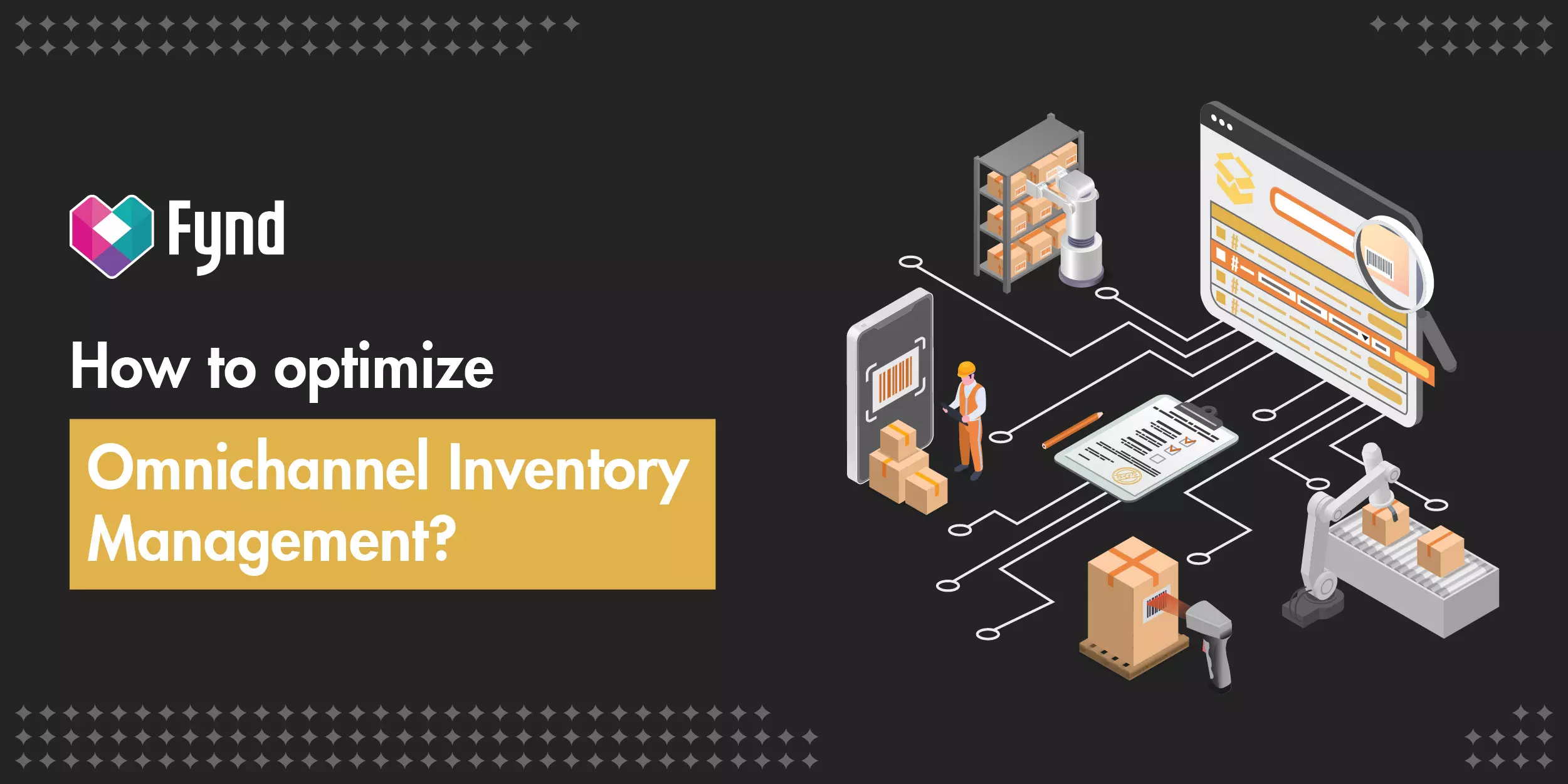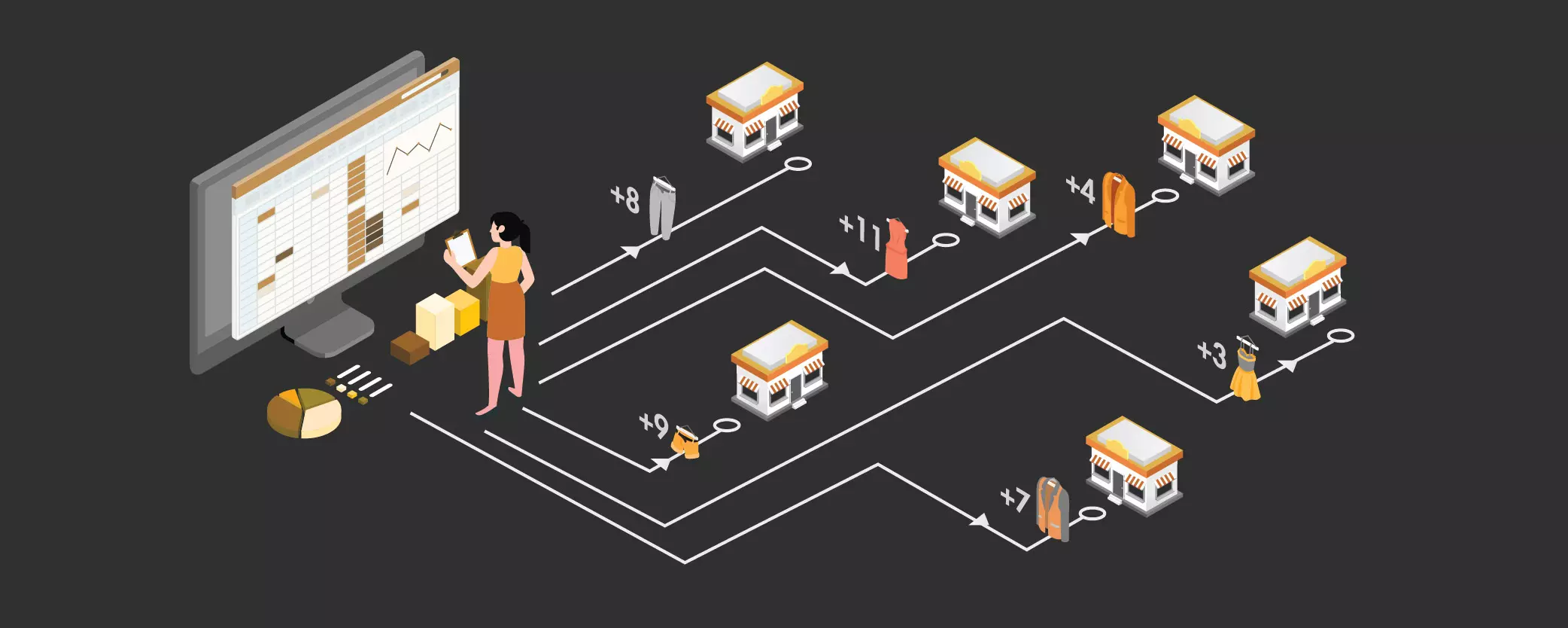How to Optimize Omnichannel Inventory Management?

Today's customers expect businesses to be able to meet their needs through any channel they choose, regardless of whether they are interacting with your brand online, in person, or through any other channel. It means that retailers should track the inventory accurately and efficiently across all sales channels.
Omnichannel inventory management can help you meet this challenge. With the right tools in place, you can streamline your ordering and fulfillment processes, ensuring that your customers always have access to the products they want when they want them.
Need of Omnichannel Inventory Management

If there are numerous channels in a retail business. It becomes highly challenging to control, track & get a single view of the retail brand’s inventory. Some of the brand’s inventory may be visible on one channel but absent on the other, which can confuse the customer as to why some products are more visible on one channel but absent on channels that are more convenient to the customers.
On the other hand, such a situation can be difficult for the retail brand as it has to keep track of stock levels and manage numerous warehouses & its inventory visibility across all channels. There are endless possibilities of manual error in inventory management that can lead to lost sales and decreased profits for the retail business.
That's where omnichannel inventory management comes in. Omnichannel inventory management is the process of managing a retail company’s inventory across all the integrated channels through which you sell your products. It allows businesses to track inventory levels and stock locations in real-time to make better decisions about what to sell and when to sell it.
Ways to Optimize Omnichannel Inventory Management
1) Use a reliable omnichannel inventory management system (Fynd)

When the number of orders in the retail business grows to an uncontrollable level, it is almost impossible to keep an eye on everything yourself. There can be greater chances of frequent human errors that can jeopardize a retail business plan to grow as a successful brand with an excellent product presence and reputation.
Some important benefits of Fynd inventory management are:
- Easily integrable & compatible with other software & platforms of brands
- Assured product & brand presence on marketplaces like Myntra, Flipkart, Amazon, Ajio, TataCliq with ease
- The number of repeat customers can be scaled up or down depending on the number of sellers assigned to these customers.
- Get real-time single inventory view and price sync for sellers on all channels
- Fynd OMS is completely synchronized with the inventory management system
2) Integrating various inventory channels to a single system

It is possible by implementing an omnichannel Inventory Management System (IMS). This will enable inventory consolidation and planning in a centralized manner. Here are some unique strategies to implement it:
Cross channel synchronization
Cross channel integration allows inventory management systems and the channel management software (CMS) to talk to each other, passing inventory data back and forth in real time. For example, if you ask your channel management software to allocate a percentage of stocks to certain channels.
Then your IMS automatically gives an inventory number to the CMS, then to each of the sales platforms. Inventory figures immediately resync to each channel as purchases are made, ensuring that the total amount of stock is always visible. Over Serving or undeserving customers are eliminated, as well as the time and effort required to manually update stock information.
Integrating the IMS with a shipping management platform
Shipping integration saves you valuable time by keeping you organised and automated throughout the shipping process. Once customers have completed the transaction, the shipping platform will take care of printing the proper labels for you - independent of the channel via which you make sales.
Having to choose the most appropriate carrier for each shipment manually reduces the decision fatigue that comes with it.
3) Investing in SKU level inventory predictive modelling

Today, many retail businesses are looking for ways to streamline their inventory management processes. One way to do this is through the use of predictive modelling. In particular, SKU level inventory predictive modelling can be used to make more accurate predictions about future stock requirements. This can be done by using past sales data to build models that identify patterns in customer behaviour. These models can then be used to predict demand for individual products and help businesses to better manage their stock levels.
Advantages of SKU level inventory predictive modelling:
- This method can help businesses better plan for stock-outs and excess inventory, both of which can lead to significant losses.
- This approach allows retailers to proactively manage inventory levels, reducing the need for markdowns and improving overall profitability.
- It allows businesses to forecast demand for particular items and make decisions about whether or not to reorder those items before they run out of stock.
4) Implement an ERP system to get control over inventory

An excellent advantage of implementing an ERP system is the possibility to get more control over inventory as it will make sure you can see what is in stock and where.
Know the location of products
An omnichannel ERP will help you know where the different products are located or stored in real time. You can check to see how much inventory is still available in warehouses and utilize this information to ensure that you purchase new inventory in a timely manner. Advanced enterprise resource planning solutions can even predict how much inventory will be required in your warehouses and sales channels based on analytical algorithmic models.
Show the location of products
Customers will appreciate being able to see where their favourite products are available. A critical study indicated that 41% of businesses saw an increase in sales after enabling inventory visibility. A good ERP solution helps your customers see where the brand products are in different locations.
Fynd ERP solutions help you see live inventory across different retail locations across the country. This helps the customers to visit a nearest brand store and quickly purchase their selected products, resulting in 100% order fulfillment.
Conclusion
Achieving an efficient inventory management system is one of the most important aspects of retail success. A healthy inventory of the right products at the right time in the right place can be essential to your business’ success. This blog discusses how inventory management is becoming more and more important even for small businesses, and some critical ways to make it more efficient.
Fynd has helped +600 brands in the retail industry embrace omnichannel retailing strategy with ease. Enjoy accelerated business growth by transforming from a multi-channel retail brand to an Omnichannel retail brand. If you are curious to learn more about it, Book a demo or Contact us today.
Frequently asked questions
Omnichannel inventory management is the process of managing a retail company’s inventory across all the integrated channels through which you sell your products. It allows businesses to track inventory levels and stock locations in real-time to make better decisions about what to sell and when to sell it.
For retailers, omnichannel inventory management is essential as it helps to streamline ordering and fulfillment processes, ensuring that customers always have access to the products they want when they want them, regardless of the channel they use to purchase.

There are several ways to optimize omnichannel inventory management, including using a reliable omnichannel inventory management system such as Fynd, integrating various inventory channels to a single system, investing in SKU level inventory predictive modeling, and implementing an ERP system to get control over inventory. By implementing these strategies, businesses can better plan for stock-outs and excess inventory, reduce the need for markdowns, and improve overall profitability.

Fynd's inventory management system provides several benefits for retailers, including being easily integrable and compatible with other software and platforms, assured product and brand presence on marketplaces like Myntra, Flipkart, Amazon, Ajio, TataCliq, and providing real-time single inventory view and price sync for sellers on all channels. Additionally, Fynd OMS is completely synchronized with the inventory management system, allowing for streamlined ordering and fulfillment processes.

Cross-channel synchronization allows inventory management systems and the channel management software to talk to each other, passing inventory data back and forth in real-time. By implementing cross-channel synchronization, businesses can eliminate over-serving or undeserving customers and reduce the time and effort required to manually update stock information. This helps businesses to make more accurate predictions about future stock requirements, better plan for stock-outs and excess inventory, and ultimately improve overall profitability.

SKU level inventory predictive modeling is a way to use past sales data to build models that identify patterns in customer behavior. These models can then be used to predict demand for individual products and help businesses to better manage their stock levels. By investing in SKU level inventory predictive modeling, retailers can proactively manage inventory levels, reducing the need for markdowns, and improving overall profitability.

Implementing an ERP system can provide businesses with more control over inventory by allowing them to see what is in stock and where. An omnichannel ERP will help businesses know where products are located or stored in real-time, allowing them to check how much inventory is still available in warehouses and utilize this information to ensure that they purchase new inventory in a timely manner.
Advanced enterprise resource planning solutions can even predict how much inventory will be required in warehouses and sales channels based on analytical algorithmic models. Additionally, customers will appreciate being able to see where their favorite products are available, which can increase sales and improve customer satisfaction.
































%252520(1).webp)
